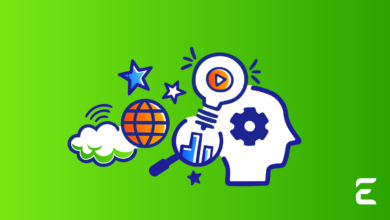
We bet you’ll agree that AI-based tools and services rule the world today. Although this technology is many years old, it has been experiencing a new lease of life since the early 2020s. ChatGPT hit the world in 2022, and its creators unwillingly opened Pandora’s box:
AI-based writing tools started to grow like mushrooms after rain. The landscape of content creation has changed: Webmasters and business owners outsourced content creation to AI, thus saving the time and money they’d spend working with professional writers.
The education niche raised the alarm:
The searches for “AI essay writing” jumped super high: 2,041% compared to the last five years, with one-fifth of submitted college essays being AI-generated. Many called ChatGPT a threat to the education system.
The issue wasn’t only about academic dishonesty. The quality of AI content leaves much to desire: Generic, superficial, and often false or biased, it looks like written by a 5th-grade student with no expertise and original insights. Who’d like to see this kind of content when searching for in-depth info on Google?
Well, for every action, there’s a counteraction.
It was AI detectors who stopped the invasion of low-quality, boilerplate AI texts into our information space.

What Is an AI Detector?
An AI detector for essays is a tool that processes and examines the text you provide to determine whether it is AI-generated.
How does it work?
The software analyzes a text’s structure and linguistic features (semantic meaning, language choices, etc.), comparing it to existing AI- and human content datasets to differentiate between them.
While AI content detectors don’t understand language as well as humans, they are still quite accurate in determining AI-generated texts. Like AI writing tools, they are constantly evolving:
Today, they are 70% reliable, helping us see whether AI was involved in content writing. Sometimes, false positives or negatives happen, so we should manually review them for greater accuracy.

AI Detectors vs. Plagiarism Checkers
In academia, plagiarism checkers are the best friends of educators and students. The former uses them to see if a student didn’t copy-paste an essay from third-party resources, and the latter addresses those tools to check if their work looks original to prevent accusations of plagiarism.
AI detectors serve the same general purpose: Uncover dishonesty in writing.
But:
The underlying mechanisms of AI detectors and plagiarism checkers are different.
- AI detectors: examine the text’s features and find patterns consistent with human-written or AI-generated texts.
- Plagiarism checkers: cross-reference texts with a database of online resources to find close similarities (keywords, sentences, and specific text fragments) or direct hits.
Why Use AI Detectors When Writing an Essay
Students know that AI writing tools can craft original texts that are more challenging to distinguish via plagiarism checkers. But guess what?
Teachers know that, too.
With that in mind, educational institutions don’t limit their toolkits with plagiarism checkers. They also address reputable AI detectors to see if their mentees could have played with ChatGPT when crafting their essays or other written assignments.
When you’re a student, a trustworthy AI detector can help:
- Ensure your academic integrity. Even if you write essays from scratch, your teacher’s AI detector may determine some fragments as AI-written. So, check your document before submitting it and revise all problematic parts accordingly.
- Craft creative and original texts. As said, a teacher’s plagiarism checker or AI detector may flag your content as non-genuine. Use corresponding tools to revise your drafts for stellar originality.
- Improve your writing skills. Let’s face it: While AI writers can craft original texts that plagiarism checkers don’t see, the quality of those texts is extra poor. Vague phrases, repetitions, redundancy, templated and hard-to-read paragraphs — that’s how AI writes and that’s what AI detectors will see as artificial. You’ll revise and edit your essays accordingly, thus making them look and sound more professional.

How to Choose the Best AI Detector for Essays
And now, the question:
What is the best AI detector for students’ essays?
With so many tools on the market and the technology continuously evolving, there’s no one-size-fits-all answer to this question. Here are some core points to consider when choosing an AI detector to revise your content:
- Accuracy. Look for the tools with proven accuracy. Read their reviews from third-party, unbiased resources evaluating their performance; check their published results; and test them to manage false positives (when a tool flags genuine text as AI-generated) and false negatives (when a tool misses AI-written fragments).
- Updates. Choose an AI detector with regular updates: Given the rapid evolution of AI text generators, your tool should be able to catch up with them.
- Usability. Consider tools you can integrate into your workflow and use their features intuitively. Not everyone is an expert in AI tech, so user-friendliness is a significant factor here.
- Recommendations. What do others say about that AI detector? Consider feedback from users with similar needs: other students who check essays via AI detectors, professionals working with academic texts, etc.
- Privacy and Cost. Ensure that your chosen AI detector complies with ethical and legal standards regarding your data privacy. Also, consider tools aligning with your budget; check whether they offer free options or require a subscription.
Long Story Short
AI detection is among the top challenges in today’s content and essay writing landscape:
AI text generators advance, and we need instruments to distinguish between human and machine writers. This is an issue of professionalism, copyright infringement, and academic integrity.
AI detectors have become a solution. While they still have limitations, they are valuable tools for determining a machine’s involvement in writing. If you plan to use one for students’ essays, remember not to trust it 100%. Combine it with human review to enhance accuracy.
Balla




